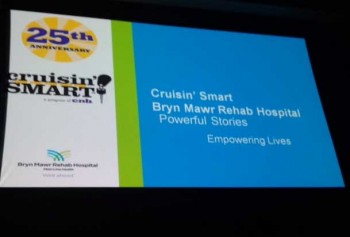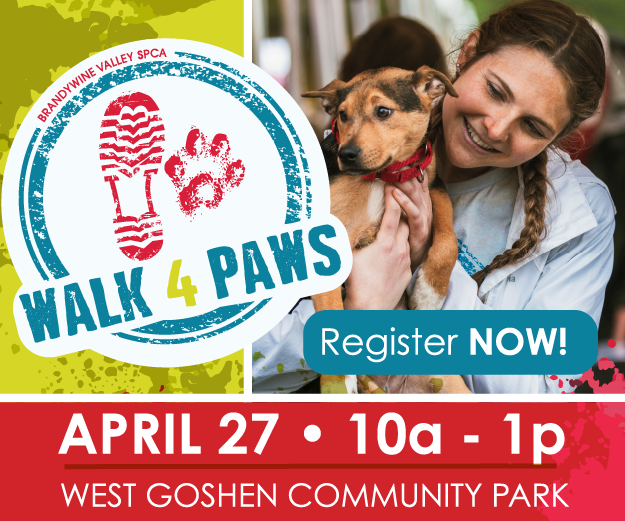Students come face to face with consequences of impaired driving during a Cruisin’ Smart™ assembly
By Karen Cresta, Correspondent, The Times
 EAST MARLBOROUGH – Unionville High School (UHS) students received a powerful message on Friday, April 11, during a safe driving assembly, Cruisin’ Smart™, an initiative of Bryn Mawr Rehab Hospital. A previous patient and the guest speaker, Mike Vozzelli, delivered a powerful message – don’t drive impaired or get in a car with an impaired driver, not even one time.
EAST MARLBOROUGH – Unionville High School (UHS) students received a powerful message on Friday, April 11, during a safe driving assembly, Cruisin’ Smart™, an initiative of Bryn Mawr Rehab Hospital. A previous patient and the guest speaker, Mike Vozzelli, delivered a powerful message – don’t drive impaired or get in a car with an impaired driver, not even one time.
A brain injury nurse at Bryn Mawr Rehab Hospital, Domenica Libertella, began the presentation with some eye-opening statistics about the dangers of driving while impaired or distracted. She asked the audience of students- and many were brave enough to raise their hands truthfully- if they have ever driven while texting or got in a car with an intoxicated driver. She mentioned that many, if not already, will eventually encounter a situation where they may have to decide to get in a car with someone who has been drinking.
Lebertella mentioned the many brain injuries and substantial injuries she sees from impaired and distracted driving. She told the intently listening students that the hard reality of the statistics is that 20 percent of drivers under 20 years of age will have crashes involving some sort of distraction. About one fourth of teens will respond to a text while driving which usually takes approximately five seconds to receive or send. This is five seconds when eyes are off the road. According to Lebertella, that’s driving the length of a football field while not looking.
Before introducing the guest speaker, Lebertella left the audience with the fact that car crashes are the number one killer of youth within 16-20 years of age. She mentioned that on an average weekend that doesn’t include a prom or a special event, there are about five car crashes that may happen. One of the crashes may involve someone lucky enough to walk away from it, while another may be left with a life-changing injury, and three may involve youth who will not live to tell about it.
“As Mike will tell you shortly, he spent many months in our unit where I work, working hard to be where he is today, but don’t think when you hear him talk that he is the average survivor of this kind of crash. He is not,” Lebertella said.
Mike Vozzelli got up from his chair at the opposite end of the stage from Lebertella and walked across the stage with a distinct limp and paralyzed left side. His journey across the stage was a potent message as the student body watched him limp up to the podium and introduce himself with slurred speech. He began with his story and his message of warning.
Vozzelli has been telling his story as a representative for Bryn Mawr Rehab for 20 years. A previous track star in high school, he could run a mile in 4.26 minutes and was close to breaking the record at the time. He was using drugs and smoked cigarettes and pot but felt that none of that affected his physical abilities. He thought he was the exception and that he would never be an alcoholic or drug addict.
“I graduated high school as an alcoholic and drug addict but didn’t know it at the time. I was coasting through life and having fun and partying with friends,” Vozzelli said.
“A year later and 21 years old and legal to drink, I didn’t have to hide my drinking. It had an immediate effect on me. On a trip to Atlantic City, the biggest gamble I took was in getting home. I lost the bet,” Vozzelli continued.
Vozzelli’s friend and he were both drunk and high on the ride home in his friend’s car. His friend was nodding off at the wheel so he thought he could be the “safer driver” and took over while his friend went in the back seat to sleep. Vozzelli stated that he drove drunk for the first time ever after buckling his seat belt.
“I found out it only takes one time. I only made it a few miles down the road when I passed out,” Vozzelli admitted.
The car flipped over five times leaving a mangled car and Vozzelli with a shattered neck, damaged brain, and paralyzed left side. It would be months before he woke up from a coma, not being able to care for himself.
According to Vozzelli, he spent ten months as an in-patient and five more years doing physical therapy to learn to move and walk again. He also did occupational therapy and speech therapy to learn to talk, eat, chew and swallow without choking to death.
“All of that therapy, and as you can tell, I still don’t walk or even talk all that well,” Vozzelli continued, “and will never get use of my left arm again. Drugs and alcohol will suck the life right out of you. If I knew life was this fragile I never would have done it, not even the one time. Using cell phones and texting are just as dangerous. This one time destroyed my whole adult life just as sure as it began.”
The presentation slide behind Vozzelli read, “I made the choice to drink and drive. No one forced me to do it. And it was one time.”
Since the accident, Vozzelli has been speaking in front of audiences to “help people like your selves to learn from my mistakes.”
“It’s a very lonely life when you are different. Basically all the people I partied with – they all deserted me. There is not one person in my life today before my accident,” he added.
According to Vozzelli, the friend in the car with him was the lucky one who walked away from accident – and their friendship – while he was in a hospital bed.
“You may have [driven] drunk before or rode around with drunk[en] friends and nothing happened but something could have happened. I hope that you don’t find out,” Vozzelli warned the students.
A simple message – to try and save lives and change attitudes using a true-life tragedy to deliver a potent message of the consequences of impaired or distracted driving.
“Very touching and scary,” said eleventh grader and driver, Nina Kitson, when the assembly concluded.
“I thought it was very inspirational and did a very good job of showing the true effects of drunk driving on a personal level,” Matt Dauphin added.
The students also received two brochures as part of the program, one titled, “Student Safety Tips” that included information on developing a safety plan and the other to bring home to their parents, “Parent/Guardian Talking Guide.” This brochure included tips about having a conversation with teens about the dangers of driving impaired or distracted. It also included a contract that can be developed at home between the teen and the parent/guardian. A contract promising not to make bad decisions such as drinking and driving or texting and driving to avoid ending up as a statistic in a motor vehicle crash – the leading cause of death for teens in the United States.





